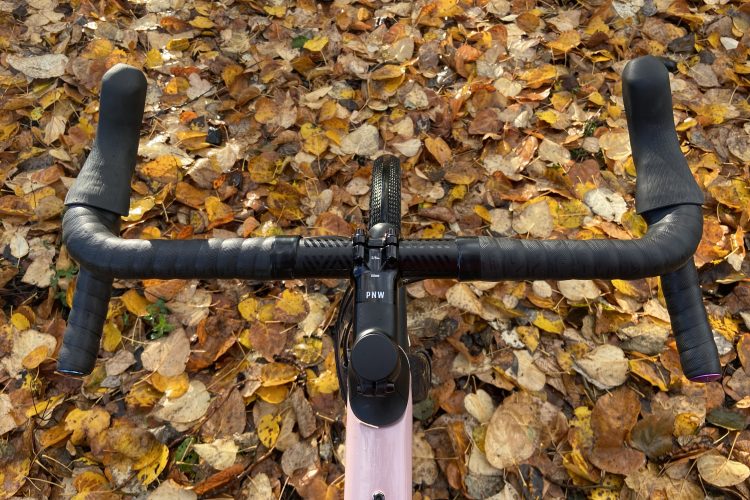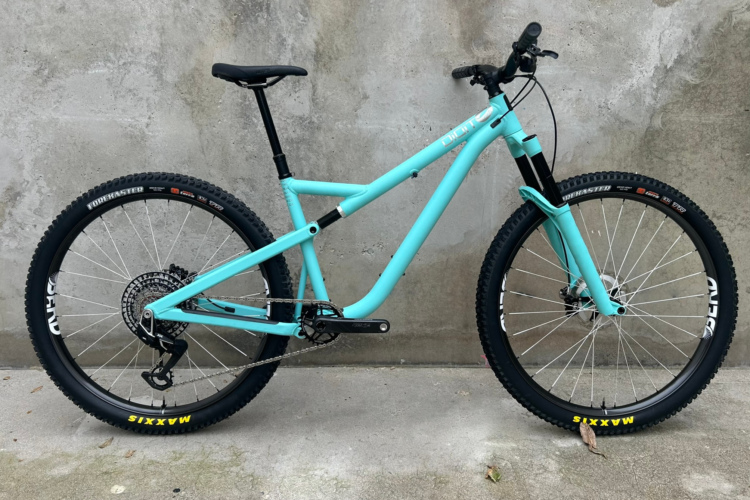
Weekly beers with my buddy who’s new to mountain biking have been invaluable of late. In addition to being a great conversationalist, this friend regularly asks trail questions that we’ve yet to answer. This week’s quick question, however, was asked on social media, and it’s a super helpful one.
“What does everyone think of riser bars? Do they give you more leverage for manuals?”
Instead of just honing in on manuals, we will peruse the reasoning behind taller bars and try to address most of their potential benefits and detriments. Check out our past article on handlebar width to learn more about that important dimension or more generally, how to choose the best mountain bike handlebars for you.
Riser Bars for Descending
Before we had dedicated trail or enduro bikes, bars were either fully flat for a low XC position or fairly raised for DH. Thankfully, geometry has drastically shifted at those poles, and there are rows of great bikes between them that roll well on a wide variety of tracks. Riser bars exist to get the handlebars higher when a rider is consistently descending steeper slopes. Combined with longer head-tubes, taller stack heights, stem spacers, and longer axle-to-crown fork measurements, riser bars push the grips up and back where you want them for an intense decline.
Higher bars can add confidence to your steep singletrack game by lifting the grips and allowing you to better regulate where your weight is on the bike. By steep I mean slopes that situate the bottom of your rear tire above the front hub. With a bar that’s too low, gravity forces the rider to put more weight on the front tire than they may want to at a given time. With higher hands, the rider can choose to weight the front tire when they want added grip under the bars or to lean back slightly to keep further from the uneasy over-the-bars sensation that comes from a track that’s too steep to walk down.
On more gradual slopes some riders like a higher bar that’s at the ready for pumping and pushing the front tire into compressions where they want maximum traction. It may seem counter-intuitive, like the higher bar would remove body weight from the front tire, but with the correct body English, raising the bar a bit can be an effective way to allow for better weight modulation and balance.

Riser Bars on Climbs
We touch bikes with our ass, hands, and feet, and on descents, one of those variables is removed. While seated on a climb or a flat trail, riser bars may lose some advantage and can also be problematic if you’re trying to win a steep ascent.
For example, in an elite level XC race, many riders will have their bars as low as possible, typically with negative-rise stems and sometimes riser bars that are flipped over to provide additional drop. That lower front end helps athletes keep the front tire planted on steep climbs where XC races are often won, and allows for a more aerodynamic posture when flat-out pedal speed is the paramount variable. While you can certainly climb with a high riser, your head may need to be a lot closer to the bar to make things work, and if it gets really steep you’ll struggle more to steer.
Getting back to the original question, that same light front wheel sensation might also help with manuals, though that depends a lot on your body geometry and manual skills.
Alternatively, if your bike’s stack height is too low for your body geometry, or the fork steerer tube is cut too short to add spacers beneath, a riser bar may create a more comfortable overall fit. If your bike’s stack height is too high for your body, for example, if you have fairly long arms, you may want a flatter bar to make things cozy. This fit question also plays catch with your personal level of flexibility, as some XC athletes may not be able to get low enough for a flipped riser and negative-rise stem.
Finally, some bikes are designed to slide between different travel amounts by swapping a fork and a shock link. Since both frame-travel options use the same headtube you may want a riser bar and spacers below the stem when riding in the lower travel configuration to keep that ass-to-hands ratio similar.

Riser Bar Effect on Reach
As you add spacers beneath the stem your handlebars move incrementally rearward, following the angle of the head tube. In addition to lifting the grips, a riser bar can similarly shorten the frame’s reach in very small amounts.
If two otherwise identical handlebars with a 20mm rise difference are mounted with the same rearward bar-roll orientation, the position of the grips moves both up and somewhat back as that 20mm rise is added. There are more effective ways to shorten a bike’s reach, but this is worth noting as you experiment with higher bars and different handlebar shapes. If you really want to shorten a bike’s reach the best bet is with a reach-adjust headset like this one from Works Components.
Riser Bars Can Provide Comfort
Riders who experience wrist pain or discomfort can fiddle with the fore and aft roll of a riser bar to find the spot that feels best. A small roll adjustment can also shift your weight just enough to make for better bike handling.
It’s important to pay attention to the overall position of the bar while adjusting its angle so you don’t end up with something that’s only rideable in one position. The sweep angles of every bar are designed with optimal mounting placement in mind, and it’s best not to deviate too far from that point. Fortunately, if you need a different shape there are hundreds of options available.
Back pain can also be a sign that bar height might be off. In general, sorting out the ergonomics of our cockpits is one of the most personal elements of any bike, and it’s worth loads of time and attention to get the fit dialed.
While the main point of riser bars is to create a better descending position, there’s certainly more to the story.
High rise handlebars
Finally, here are a few high rise handlebars to consider, ranging from 35-76mm of rise.
- Protaper alloy riser bar (76mm rise, 810mm wide)
- Diety Highside (50mm rise, 760mm wide); Deity Highside Riser Bar Review
- Race Face Atlas (35mm rise, 820mm wide); Race Face Atlas Handlebar Review
- e-thirteen Base 35 (35mm rise, 800mm wide)



















